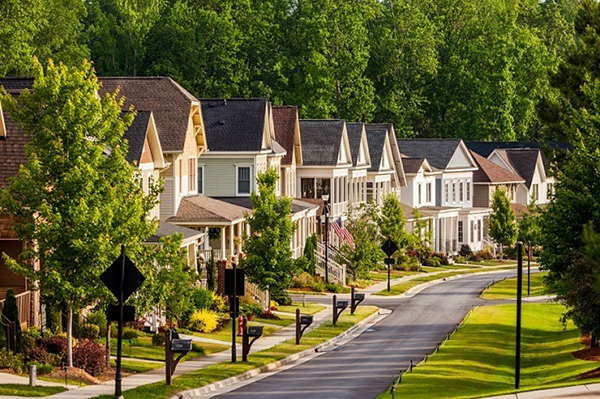When it comes to new home communities, bigger is often better, to builders as well as buyers.
Master planned communities, or MPCs, are defined as properties for which every element and consideration is planned from the get-go and the community is contracted to follow that plan exactly.
“Developers have learned that they can achieve even more sales and higher prices by joining forces with adjacent land owners to create larger master planned communities with scale,” John Burns Real Estate Consulting, based in Irvine, California, said in a recent report. The company calls these “mega masterplans.”
John Burns Real Estate Consulting figures some 28,000 people bought new homes in the top 50 MPCs last year. That’s nearly 5 percent of the estimated 613,000 new houses sold in 2018. The company also reports that each of the top 50 sold at least 320 new units last year, or nearly one a day.
The problem with MPCs is that houses within their borders usually come at premium prices. After all, someone has to pay for all that good stuff. So, if you are extremely cost-conscious, you might want to stick with stand-alone communities. “There are plenty of nicely done free-standing communities,” says Jody Kahn, a senior vice president at the Burns consulting outfit.
If you are after the perks, though, there are perhaps 500 or so MPCs throughout the country to choose from. Here are some things to consider:
- Amenities: If you can’t find a house you like, then this is a moot point. But once you do, take a hard look at the amenities package. There’s no rule of thumb about what has to be offered, but Kahn says that “at a minimum,” the place should feature “a solid water-themed amenity,” a pool and clubhouse, perhaps a lagoon or lake. “People really gravitate to water.”
Twenty years ago, a golf course or two was a must-have feature, but no more. Lately, interests have shifted toward things like walking and biking trails that are not paved to give the property a less-developed appearance. Estrella in Goodyear, Arizona, outside Phoenix, will include more than 50 miles of paths and trails for residents’ use.
Parks in and between neighborhoods are popular these days, too, as are social networks and a healthy lifestyle. Harvest in Argyle, Texas, near Dallas, has a working farm with community and private plots.
“Our research — and my own personal experience — shows that we boomers value organic, unplanned, authentic, and experience-based housing amenities the most,” says Kate Seabaugh, a Burns research manager. “What should also interest the boomers is that these amenities are generally not expensive.”
- Housing: A well-designed and successful MPC will offer a wide range of houses, sizes and prices to draw a variety of owners, from millennials to seniors. Look for small, medium and large lot offerings, as well as a broad offering of housing types, both single and multi-family.
- Competition: There’s no rule of thumb, either, on the ideal number of builders active in the MPC, but there shouldn’t be so many that they cannibalize each other. A certain amount of overlap won’t hurt, says Kahn. But if every builder is marketing to the same buyer, some are going to fail.
- Financials: Check your builder’s financials to make sure they have the wherewithal to weather a downturn in sales and will be around to live up to their warranty, whether one year or longer. Also check on the stability of the developer so you can be as certain as possible that all that has been promised will be delivered.
During the 2006-2008 housing recession, one of the four builders who joined together to develop Inspirada in Las Vegas slipped into bankruptcy, putting extra pressure on the other three to carry on. Luckily, they managed to pick up the slack, and the property is now flourishing.
- The Rules: The regulations with which you will have to live by are there to maintain the common areas and housing values. They help create a “nice little wonderland,” says Kahn. But in an MPC, there might be rules for your neighborhood as well as another set of requirements for the overall community, so you have to be doubly attentive. Otherwise, you might run afoul of the law. For example: You may not be able to park your boat, RV or working vehicle at your own house.
(Lew Sichelman has been covering real estate for more than 50 years. He is a regular contributor to numerous shelter magazines and housing and housing-finance industry publications. Readers can contact him at lsichelman@aol.com.)


The problem with planned communities is they use cookie-cutter building plans, which of course saves them lots of money on design services. But they also use a lot of cheap materials including aluminum and vinyl siding (versus brick), and homes are so close together you can hear your neighbors using their bathroom. They are generally built on slabs as well, but the ones with the garages in the rear are a good idea versus leaving them in a driveway or on the street as is done now.